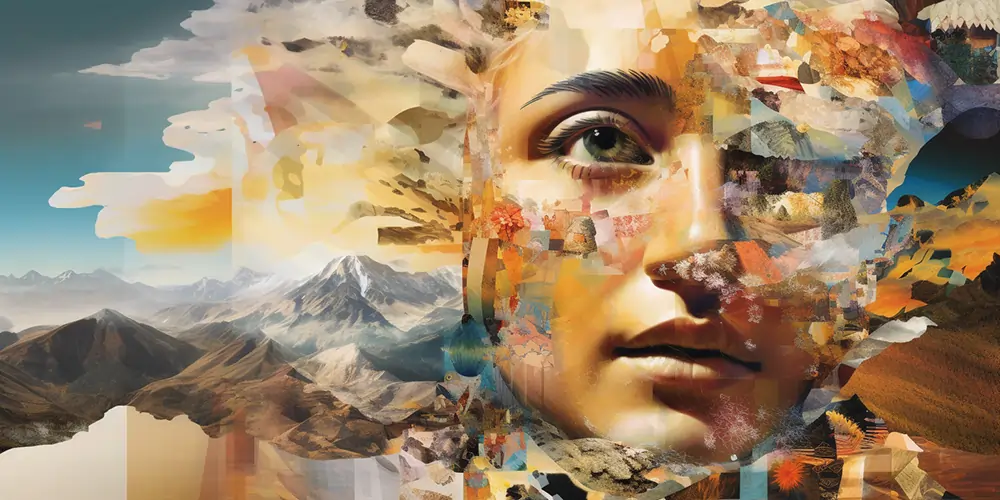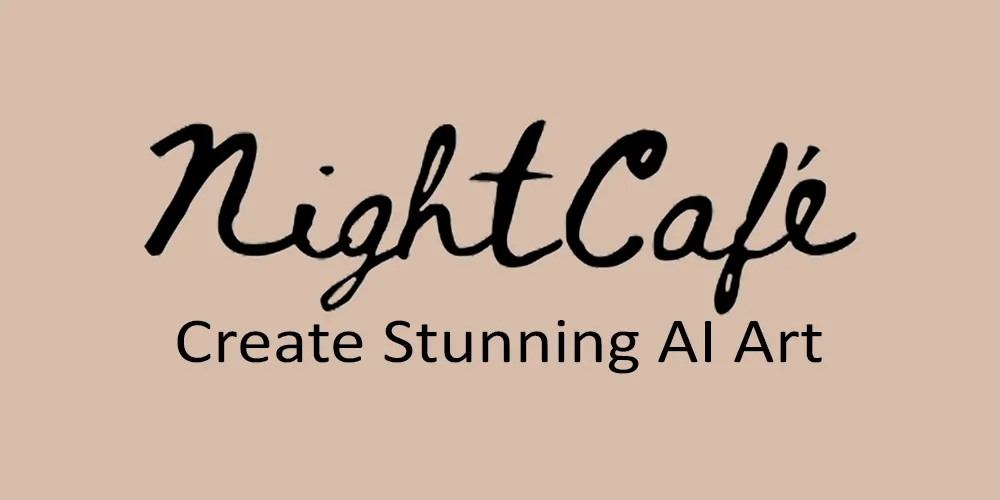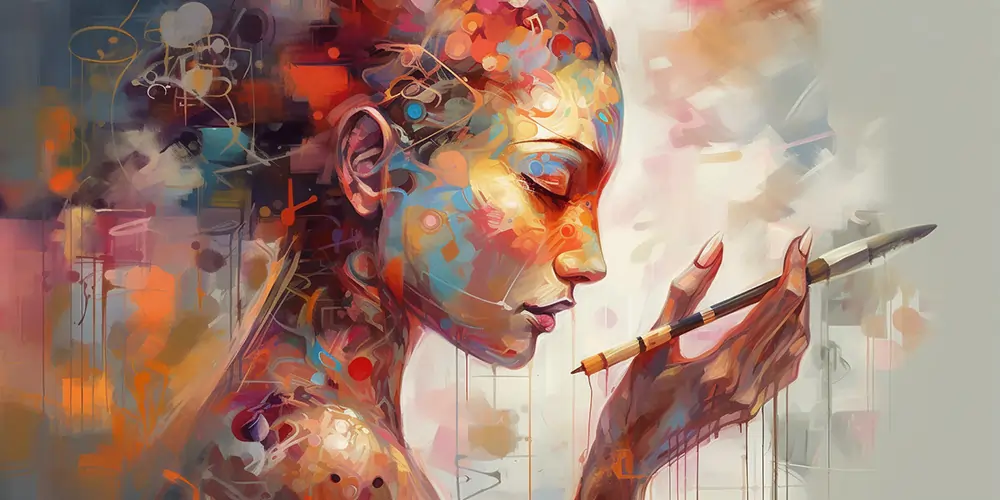AI Image Generators are innovative tools that utilise artificial intelligence to transform text prompts into visual content. At the heart of these generators lies the creative collaboration between humans and AI.
You, as a user, provide the AI with a text prompt – a sort of creative brief – and the AI interprets your words using its advanced algorithms to create a unique image.
The text-to-image prompt plays a critical role in this process. It’s through this prompt that you communicate your creative vision to the AI.
Like an artist’s sketch or a filmmaker’s storyboard, the prompt sets the direction for the final image. It can include details about the subject, style, setting, emotion, and much more.
The Need for a Flexible Prompt Framework
While AI Image Generators are remarkable tools, their effectiveness largely depends on the quality of the prompts they receive.
A vague or poorly structured prompt might result in an image that doesn’t quite match your vision. However, on the opposite side, a well-crafted prompt can lead to an image that surpasses your expectations.
That’s where the need for a flexible and adaptable prompt framework comes into play. A well-designed prompt framework can guide you in creating clear, detailed, and effective text-to-image prompts.
It can help you structure your ideas, ensuring that the AI has all the information it needs to generate the image you envision. Moreover, a flexible framework can be adapted to a wide range of creative scenarios, offering you limitless possibilities for AI-generated art.
In the following sections, we’ll delve into the prompt framework we’ve developed and provide you with practical tips to create captivating prompts that inspire the AI Image Generator to produce stunning visuals.

The Method
Designing the Prompt Framework
To create the prompt framework, we started by analysing a series of successful prompts used in AI text-to-image generators. We carefully dissected these prompts, identifying common elements and structures.
These findings became the foundation of our framework.
Our approach to this design process was systematic and iterative. We treated each prompt as a puzzle, breaking it down into its component parts.
We then categorised these components, looking for patterns and similarities. Over time, we were able to distil these components into a set of core elements that consistently appeared across different prompts.
Once we had identified these core elements, we started to assemble the framework. We experimented with different structures, arranging the core elements in various orders and configurations.
After numerous iterations, we arrived at a flexible and adaptable framework that can accommodate a wide variety of prompts.
Guiding Principles
Throughout the design process, a few key principles guided us:
- Clarity: We strived to make the framework straightforward and intuitive to use. Each element of the framework serves a clear purpose and is easy to understand.
- Flexibility: We designed the framework to be adaptable to various creative scenarios. Whether you’re prompting the AI to generate a tranquil landscape or a bustling city scene, the framework can be adjusted to suit your needs.
- Precision: We recognised that the more specific the text-to-image prompt, the more accurately the AI can interpret your vision. Therefore, the framework encourages detailed, precise descriptions.
- Creativity: While the framework provides structure, it’s also designed to inspire creativity. The elements are merely guidelines – it’s up to you to fill them with your unique ideas and imagination.
In the next section, we’ll explain the prompt framework components and how they work together.

Prompt Framework Breakdown
The prompt framework we’ve developed consists of seven key segments. Each segment plays a specific role and contributes to the overall effectiveness of the prompt.
Description of the Subject
This is where you introduce the primary subject of the image. It could be a person, an object, an animal, or even a scene.
The description should be concise but vivid, providing enough detail to give the AI a clear sense of what you’re envisioning.
Style or Type of Photo
Here, you specify the overall look and feel of the image. This could include the style of photography (e.g., close-up, landscape, portrait, action), the mood (e.g., eerie, joyful, serene), or any other stylistic elements that influence the image’s aesthetic.
Characteristics or Actions of the Subject
In this segment, you dive deeper into the subject’s details or what they’re doing in the image.
If your subject is a person, this could involve their expression, posture, or activity. If it’s a scene, this could include the time of day, the weather, or any notable events occurring.
Equipment Used to Take the Photo
While not applicable in all scenarios, this segment can be used to specify the type of camera or any special features that would influence the resulting image.
This could include the type of lens, the camera’s unique capabilities, or even specific settings.
Additional Aspects of the Photo or Subject
This is a versatile segment that can be used to add extra details or nuances to your prompt. It could involve elements of lighting, the subject’s attire, or any props or background elements in the scene.
Intended Display or Usage of the Photo
This segment lets you specify the context in which the image will be displayed. Whether it’s a magazine cover, a poster, a website header, or an art exhibit, this context can subtly influence the composition and format of the image.
Camera Settings
Finally, you can specify the camera settings used in the photo. This could include the aperture, shutter speed, ISO, or any other technical details.
While not always necessary, this can help guide the AI text-to-image generator in creating a more technically accurate image.
These seven segments work together to provide a comprehensive and detailed prompt for the AI Image Generator.
By addressing each segment, you ensure that your prompt is clear, precise, and rich in detail, which helps the AI to more accurately interpret and realise your creative vision.
Examples of the Prompt Framework in Action
To further demonstrate the versatility and potential of this prompt framework, let’s walk through five examples of how it can be used to generate diverse image prompts for an AI.
Each example will show a different application of the framework and highlight its flexibility.
Example 1: Wildlife Photography
“A majestic African elephant, captured in a stunning wildlife photograph, crossing a sunlit savannah, shot on a Nikon DSLR with a powerful telephoto lens, highlighting its strength and grace, for a National Geographic feature, f/5.6”

In this example, the prompt framework helps convey a clear and vivid vision for a wildlife photograph.
The specific details about the subject, the setting, the equipment used, and the intended display context all contribute to a precise and compelling prompt that the AI can effectively interpret.
Example 2: Portrait Photography
“A captivating portrait of a young rock guitarist, passionately immersed in his music, shot on a Canon EOS R5 for its exceptional detail and colour rendering, against the backdrop of a vibrant graffiti wall, intended for a Rolling Stone magazine cover, f/2.0”

In this instance, the framework is applied to create a prompt for a dynamic portrait photograph.
The detailed depiction of the musician and his actions, coupled with the stylistic preferences and camera settings, constructs a compelling, vivid image prompt that vividly conveys the musician’s passion and the lively atmosphere of his urban environment.
Example 3: Landscape Photography
“A breathtaking panoramic view of the Grand Canyon, during a vibrant sunset, with the Colorado River winding its way through, shot on a Canon DSLR with a wide-angle lens, showcasing the dramatic play of light and shadow, for a travel magazine spread, f/16”

In this example, the framework helps create a prompt for a dynamic landscape photograph.
The details about the location, time of day, and camera equipment, along with the intended display context, work together to give the AI a thorough understanding of the desired image.
Example 4: Street Photography
“A vibrant snapshot of a lively London street market, in a documentary photography style, featuring bustling crowds, vendors selling fresh fruits and vegetables, captured on a Fujifilm X100V with its classic colour rendering, against the backdrop of historic city architecture, for a city life photo essay, f/8”

The framework, in this case, is used to guide the AI in creating a vivid street scene. The description of the subject, style of photography, the specific actions happening, and the context all come together to create a detailed prompt that the AI can translate into a compelling image.
Example 5: Still Life Photography
“An elegantly composed still life of a freshly baked loaf of bread, in a rustic style, surrounded by ingredients like flour and eggs, shot on a Sony A7R IV for its excellent dynamic range, in a cosy, warm-lit kitchen, for a baking blog post, f/2.8”

This prompt demonstrates how the framework can be used for a still life photograph.
The details about the subject, the style, the environment, and the camera used all help to convey the desired mood and aesthetic, providing the AI with a clear vision to execute.
These examples illustrate how the prompt framework can be customised and adapted for various types of photography and contexts, providing a clear, detailed prompt that enables the AI to generate accurate and compelling images.
Conclusion
We’ve embarked on an informative journey together through AI Image Generators, focusing on the importance of prompts and the necessity of a flexible and adaptable prompt framework.
We dove into the method behind the creation of the framework. We broke down its components to understand its functionality and purpose better.
Our exploration didn’t stop there. We saw the framework in action through various examples, showing its versatility and adaptability.
From wildlife and portrait photography to landscapes, street scenes, and still life, the framework was able to effectively guide the AI’s image generation.
Key takeaway
The key takeaway from our discussion is the value of specificity and structure in AI prompts.
The framework we’ve developed allows for a wide range of creative expression while maintaining a level of detail that is vital for the AI to generate accurate and compelling images.
We encourage you to experiment with this framework, adapt it to your needs, and explore its potential. Remember, the goal here is not to restrict creativity but to channel it more effectively.
This prompt framework is a tool, and like any tool, its usefulness depends on how it’s used.
What do you think?
We’d love to hear about your experiences with the framework. How have you adapted it to your needs? What interesting images has the AI generated based on your prompts? Follow us on Twitter and let us know!
Your feedback and experiences can help us refine the framework and make it even more useful for everyone.
Remember, the possibilities with AI image generation are vast. With the right prompt, you can bring any vision to life. So go ahead, experiment, create, and let’s see where your imagination and our framework can take you.




